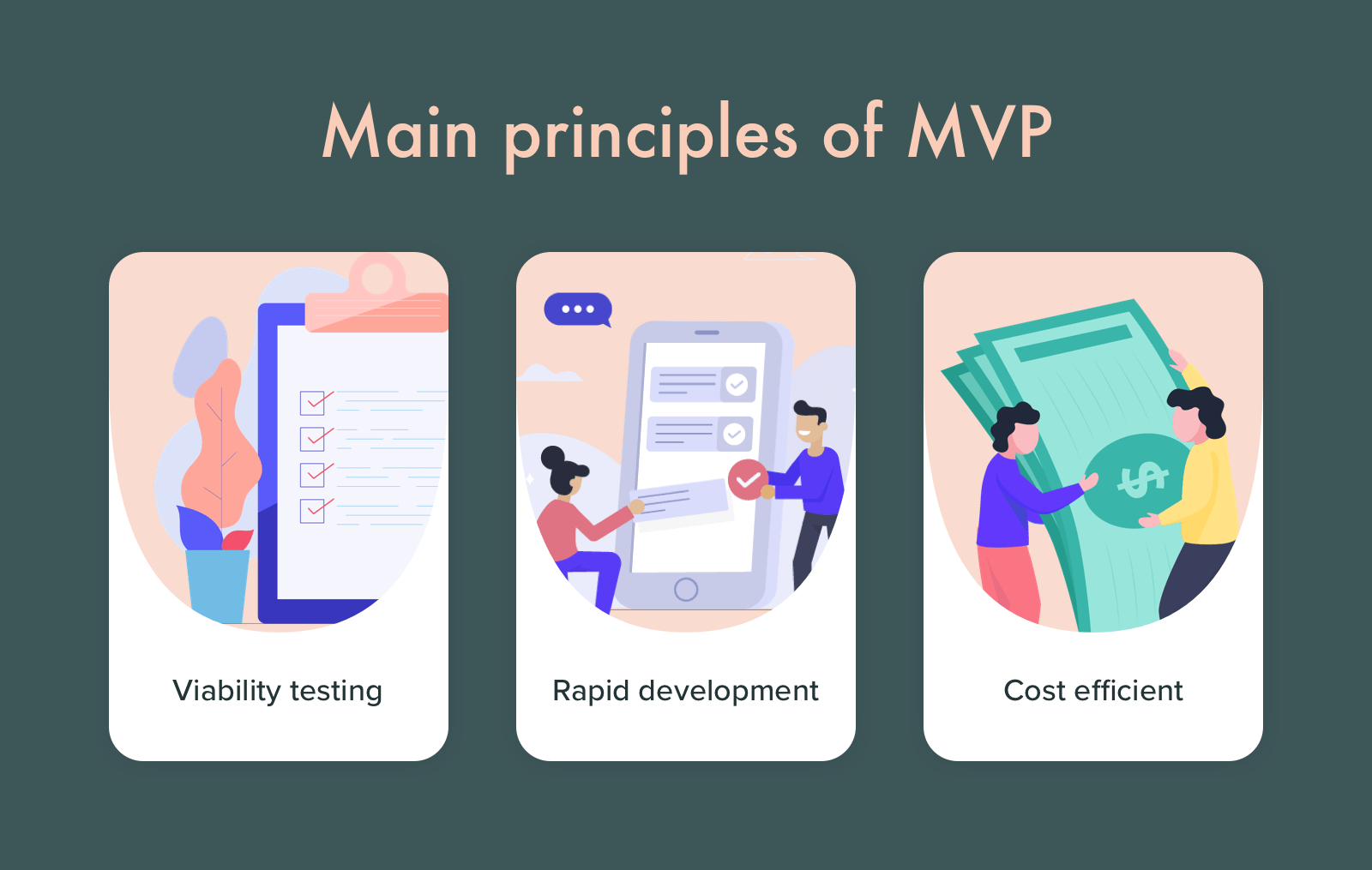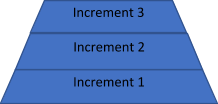MVP in the field of Software Development stands for Minimum Viable Product. It is a concept developed by Eric Ries as a part of the Lean Start Up method. According to his definition:
“The Minimum Viable Product is that version of the new product which allows a team to collect the maximum amount of validated learning about the customer with the least efforts.”
It is based on the idea of Incremental Software Development that renders a product more efficient which is complete on its own with each iteration. A Minimum Viable Product is developed as a core unit of an experimentation strategy. It consists of a basic set of solutions for testing the viability of a business idea and how the customers react to it.
The main purpose of building an MVP :

- Deliver a working product that provides immediate value with minimum resources be it money, time or infrastructure.
- Create a baseline for future development and clarify the next steps to be taken in the project.
- Earliest possible product release.
- Minimum implementation costs.
- Test the viability of the product before investing large capital and manpower into it.
- Identify potential features and failures.
- Identify and understand its user base and its preferences.
After receiving feedback, more features can be added. Every new release of the MVP should ensure a better solution for the customers and should be completed rather than a ‘work in progress’ solution. This can be understood better through an illustration by John Mayo in his article ‘Two Ways to Build a Pyramid’.
In a traditional approach, building the pyramid can be started from the base, and a new level can be added on top with each increment. Although this is an incremental process, until the last iteration it is only a ‘work in progress’, as in the image below.

The other approach is to start with a small pyramid. With each iteration, components can be added to increase its size or extend its functionality. Thus, after each increment, you will have a complete pyramid which can be further extended. 
The rule here is to add new features gradually with each release of the MVP being a better and faster solution for the agenda under consideration.
Types of MVP
There are two categories of MVPs. Low Fidelity MVPs help you to get an insight into your customer’s problems and the kind of solution that will be most effective for the customer. High Fidelity MVPs are used to find out how much the customers will be willing to pay for the solution. Furthermore, it helps you to optimize your marketing strategy and communication channels along with the best potential growth strategies.
In today’s market where a wide range of services and products are in demand, minimum viable products differ accordingly. The different types of MVPs which can be categorized under Low-Fidelity and High-Fidelity MVPs are as follows:
| Low Fidelity MVPs | High Fidelity MVPs |
| An Honest Customer Interview | Digital Prototypes like wireframes and mock-ups |
| Blogs and their Comments | 3D Models for manufacturing products. |
| Subject Matter Forums | The Wizard of Oz |
| Website or an Application Landing Page | The Concierge MVP |
| Split Testing to measure user reaction to changes | The Piecemeal MVP |
| Videos | Crowdfunding helps generate funding for the product creations as well as testing its future demand in the market. |
| UX Prototypes. | Single Featured MVP in order to focus on the most essential solutions that will be provided by the product. |
| Ad Campaigns for market surveys | Email MVP |
| User SignUp for an Upcoming Product | |
| Audience building via tests, interviews and questionnaires. | |
| Micro-Surveys |
Out of the above MVPs, most of which are self-explanatory, let us elaborate on the following few.
- Concierge MVP: Here building a product is not necessary. Here you provide the services manually and analyze your customer interaction. This helps to understand if the customers will use your product or they need an entirely different product.
- Wizard of Oz MVP: Here a fully functional product prototype is presented before the user while you are at work behind the scenes providing all that is necessary. Through this type of MVC, you are able to interact directly with your customers and review their preferences.
- Piecemeal MVP: Here existing tools and solutions are used to create your product. This involves a minimum or no investment. A piecemeal MVP consists of existing components from multiple third-party sources that are put together to create the product or service.
- Email MVP: Here you begin by sending emails with the business proposition to your existing customers. If the feedback is positive, the business idea is worth pursuing, however, if the feedback is bleak, either the proposal is missing something or it does not solve any problem.
Pitfalls
The main pitfall of an MVP is its lack of understanding. More often teams tend to believe it is the smallest amount of functionality that needs to be presented to the consumers in order to understand its viability. It might also be confused with minimum market earning. MVP is more focused on learning from customer feedback. It is very important to identify the set of features that needs to be included for an MVP. Including too many features will overload the MVP, incur cost and time and may fail to succeed. However, filtering features may cut out its key functions. The basic set of solution repeatedly mentioned here, refers to developing a deployable product with the key features which allows customers to access the solution and complete their entire journey towards their goal. Hence, it is essential that before releasing an MVP teams correlate the terms ‘minimum’ and ‘viable’ correctly. Finally, always keep in mind the metrics – Daily active users, maintenance rate and the average time spent with the product in order to quantify the success of your MVP.
Conclusion
Developing an MVP is a strategy to avoid developing products that are liable to be rejected by consumers. It is basically built to test a specific set of assumptions and prove that the product will provide an effective solution. MVPs are effective only when you take into account market feedback. This will help you to understand which features are to be developed and which to be discarded. While developing an MVP always keep in mind the most accurate but least features of the product but not the complete product.






